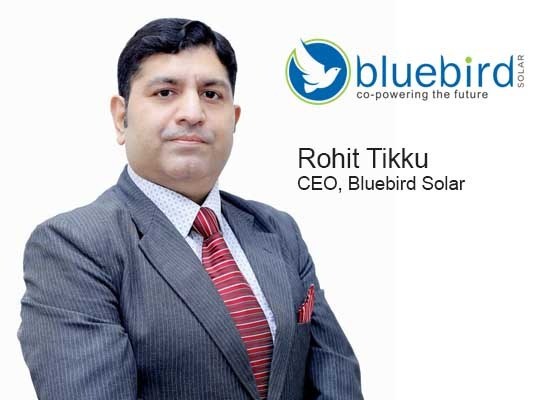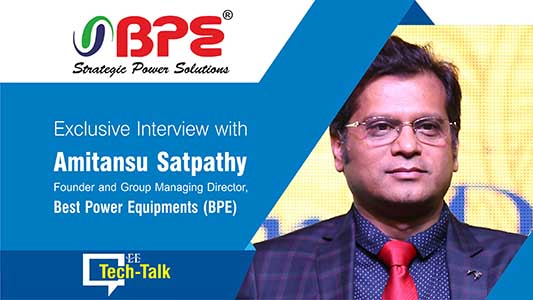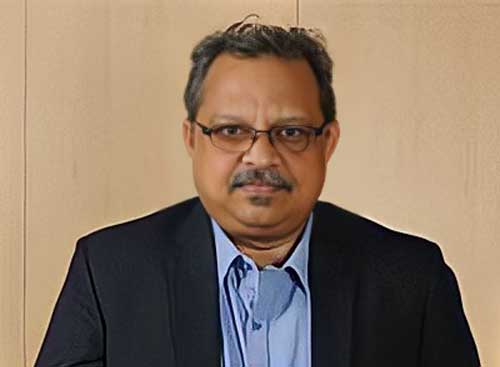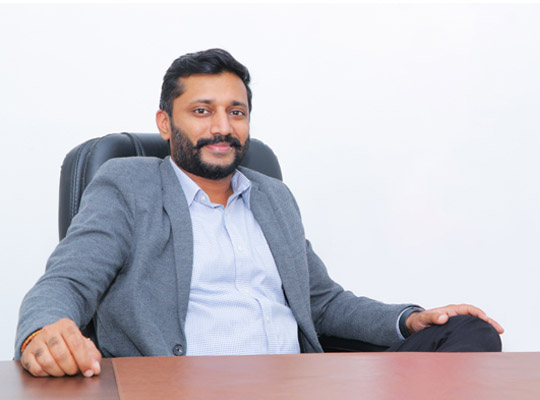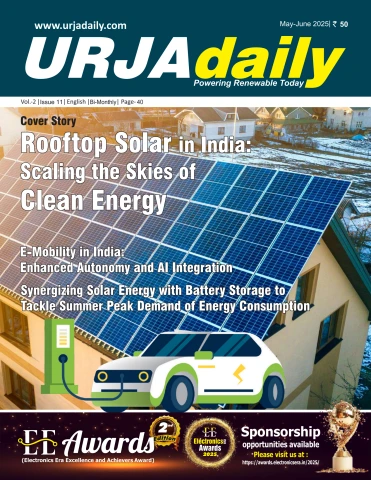UrjaDaily: Kindly Explore Orb Energy as a company, its journey so far and its achievements?
Damian Miller: Orb Energy started operations in 2006, and since then has been a leader in the solar industry in India. We started in off-grid solar, when the wholesale price of a solar panel was Rs 160-170 per Wp. Now it’s closer to Rs 13-14 per Wp. A huge decline. And with that decline in price, new markets have opened out. At first at higher costs of a solar panel we had to be focussed on off-grid installations, as solar was not yet competitive with the grid. But with the advent of net-metering policies across India around FY 2012-13 and beyond, and with the decline in the cost of solar, we moved on-grid along with the rest of the industry.
We now consistently rank in the top 5 of the rooftop solar EPC companies and developers. In the last report Bridge to India had us at no. 5 EPC company, and no. 4 developer. JMK actually had us at no. 3 among the solar companies in their most recent ranking in 2024. We are proud of this, as we take a different approach to the market by targeting the MSME segment of India, and we are unique in bringing a vertically integrated approach to this segment: we produce our own solar panels, in-house, and we finance SMEs in-house, off of our own balance sheet (we do not expect the MSME to go bank to bank finding a rooftop solar loan).
With our unique approach we have now installed more than 300 MW of solar pan-India, and we expect to scale this number to 1GW targeted solely at the SME by 2030.
UrjaDaily: While ensuring quality control and fostering sustainable practices how Orb Energy stand out as a leading Solar Panel manufacturer in India?
Damian Miller: We currently produce solar panels exclusively for our own projects. We make a solar panel that is a slightly smaller format than the market, but we find it better suited to rooftop solar installations, and highly efficient. We sometimes find the market is driven just by bigger and bigger solar panels, with less attention given to whether they are actually suitable for a rooftop solar installation. We start the other way around and design our modules according to the dimensions that are best suited to rooftop installations and maximum power output.
For quality we work with PI Berlin from Germany which periodically inspects and audits our plant under an agreement with DFC (the Development Finance Corporation of the USA). The latter provides us with our debt funding. And of course, we have all the requisite certifications: BIS, IEC, and ISO 14001, etc.
UrjaDaily: What are the various solar innovations that you are forefront in the manufacturing process?
Damian Miller: We are now upgrading our manufacturing line to make a smaller format module that will start with higher efficiency M10 solar cells, and then convert to TopCon cells. We have been a little cautious, watching how TopCon performs in the field. But assuming we see good field results, then we will eventually produce an even higher efficiency module with TopCon cells that is again a slightly smaller format to suit rooftop solar installations.
UrjaDaily: How do you view the Indian Solar Market and how do you perceive India’s 500 GW solar objectives of 2030?
Damian Miller: The 500 GW target is a renewable energy target of which the Government assumes roughly 290GW will come from solar by 2030. There is no question that even this is a challenging target. As of now cumulative solar installations in India stan at Rs 90 GW. So, getting to 290 GW with just 6 years to go is going to be tough. But though it is tough I would now say that it’s very doable.
Exciting the rooftop market through the PM’s subsidy scheme was a good start for residential rooftop solar. The residential solar sector does not have the same economics as Commercial & Industrial (C&I) sector, so a subsidy was warranted. In the C&I rooftop sector, we think the smartest policy tweak the government could make is to revert to 100% accelerated depreciation for rooftop solar for MSMEs. We think this would help MSME proprietors to priorities a solar investment – we always say that when selling solar it’s not really competition with the grid that matters, (solar is much more competitive), it’s competing with the competing priorities for capex investments in MSMEs that matter!
UrjaDaily: How you are looking at the growing demand of Solar Energy for a clean energy alternative and what steps does your company takes to make solar energy affordable, accessible, and hassle-free to customers?
Damian Miller: As you rightly state, our mission is (and always has been) to make solar energy affordable, accessible and hassle-free to our customers. And we believe our vertically integrated strategy is the best approach to fulfilling our mission.
With regard to making solar more affordable, we are able to do that by manufacturing and critically financing solar in-house. This enables us to keep the costs down, and spread them out over up to 5-year tenures for the MSME.
Accessibility is all about our network, and how we improve our reach. We do this through having an extensive network of direct sales staff that are now spread across 10 states of India. In parallel we have a big network of channel partners that target residential systems, and smaller commercial systems. Having both channels gives our customers better access to our solutions.
Also, for accessibility, we are now executing an innovative solar park model for MSME customers that have bigger power needs than their rooftop space will allow. Here we make solar accessible to them, by offering them a capex model within a solar park, and also financing it in-house. This means that a customer is no longer denied using solar to reduce their electricity bill just because their rooftop is not big enough! Our typical MSME customer in our solar park buys a sub-array of 1-5MW in size.
Ultimately, by manufacturing in-house, by financing in-house, by keeping sales, system design, installation, and after-sales service in-house, we make sure that we provide a one-stop-shop for our customers that truly delivers a hassle-free experience.
Also, we are particularly proud of our after-sales service: we give the customer three free preventative maintenance visits in the first year – we don’t wait for a problem – we proactively go out to our customers for planned visits to improve customer education and customer connect. We also have an extensive team of service technicians pan-India focused solely on after-sales service, executing annual maintenance contracts for customers, and trouble-shooting. In addition, we bring cleaning services to all our customers to help them maximise production.
UrjaDaily: What are some of the biggest challenges faced by the solar power segment in India? Also, could you pin point the policy and regulatory gaps that need urgent attention in the solar power segment?
Damian Miller: Like I mentioned earlier, in rooftop solar, I think the key challenge is how you get the
attention of MSME owners to prioritise a rooftop solar investment. MSME proprietors are facing a multitude of other challenges and pressing needs in their business, so how do you get them to prioritise a solar investment? We think reverting to 100% accelerated depreciation is the most elegant way to get there.
We also think the caps on net metering are not advantageous to rooftop solar. The new Karnataka policy of allowing a customer to go to 85% of their sanction load without any cap is a very good policy to support rooftop solar. This seems like a smart and elegant approach that other states could adopt, rather than put an arbitrary cap of e.g. 500 kilowatts on net metering.
We also need to look at a streamlined approval process across all states in India for rooftop solar and net metering. Some state level policies seem purposely designed to slow down the process for C&I customers to actually be able to synchronize to the grid under net metering.
With regard to ground-mounted solar, we understand why this is quite challenging for discoms. Here we think that the regulators need to encourage more banking for solar, and keep the ‘grid’ charges placed on solar to a minimum. If they can do that, then C&I will continue to have access to cost-effective ground mounted solutions to using more solar.
UrjaDaily: What are the sustainability goals of Orb Energy and roadmap for FY 2024-25?
Damian Miller: Our main focus on sustainability now is reducing waste in our plants and in our processes. We are also very focussed on being financially sustainable, as ultimately this is key to bringing in the investment capital that you need for scale.
In FY 24-25, we are ramping up our manufacturing plant to make our modules even more efficient, as well as replicating our unique solar park model in Karnataka. We also aim to ideally close our Series D raise (we are targeting $15-20mln in equity, which should help us leverage $30mln of debt in subsequent years) by the end of FY 24-25.
With regard to a sustainability objective that is close to my heart, I’d like to see us get more directly involved in solar panel recycling. Please watch this space in the future! It’s critical to the country and to the environment.
UrjaDaily: According to you what will be the company’s role in advancing the renewable energy agenda.
Damian Miller: I think our main contribution is that we really hone in on the MSME sector in India with a vertically integrated approach that makes it quick and easy for the MSME to make the switch to solar. The traditional approach to rooftop solar through PPA’s really left out the MSME as PPAs were restricted to companies BBB+ rated and above. But our approach to financing MSMEs does not rely on external credit ratings. We analyse the company’s results and projections to come up with our own credit analysis, and finance accordingly.
This combined with our solar park initiative targeted at MSMEs will make a big impact on the solar industry in India. Our first solar park in Karnataka (~35MW DC) is already sold out, and almost fully commissioned. In the end it is a unique model to serving approximately 15 MSMEs, which we can replicate and scale across the country. We think this will make solar much more relevant to the MSMEs with big power needs such as foundries, die-case companies, precision component manufacturers, etc.
UrjaDaily: What kind of growth and capacity additions do you see in solar power sector in India, over the next few years?
Damian Miller: For India to get to roughly 290GW of solar by 2030 (which is the government guideline under the overall 500MW renewable energy target), we think that policy incentives for solar need to be enhanced further.
The PM’s program for residential solar was a great step. But the same lens could be used to look at C&I solar and ground-mounted solar. I’m not suggesting a capital subsidy for C&I solar at all – more 100% accelerated tax depreciation as the key tool for C&I rooftop solar. For ground-mounted solar it’s more about convincing regulators to ensure that banking is retained by discoms for solar, as well as not allowing for excessive grid charges on solar under the open access model.




